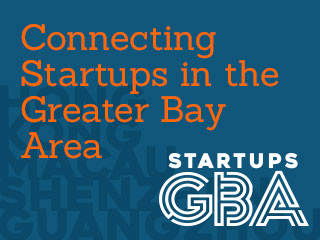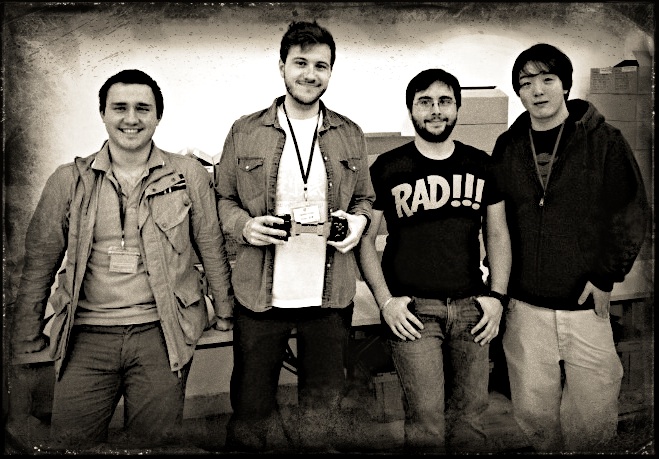
PhoneJoy and StartWareHK co-founder Martin Kessler provides this final guest post that leads to tomorrow’s very first start-up hardware meet-up in Hong Kong.
This week, my team’s project Phonejoy is finally starting to ship product to eager Kickstarter backers. Finally— because we are way behind our schedule and because there had been plenty moments of doubt that we would ever make it this far. ☺
Phonejoy Team at Warehouse in Hong Kong: Alex, Martin, Jacques, Leon (from left to right)
We have learnt an extraordinary amount since we first started in early 2012 with the development of Phonejoy. Like every other startup we’ve had our fair share of breakthroughs and of course we’ve, too, committed a ton of mistakes along our journey.
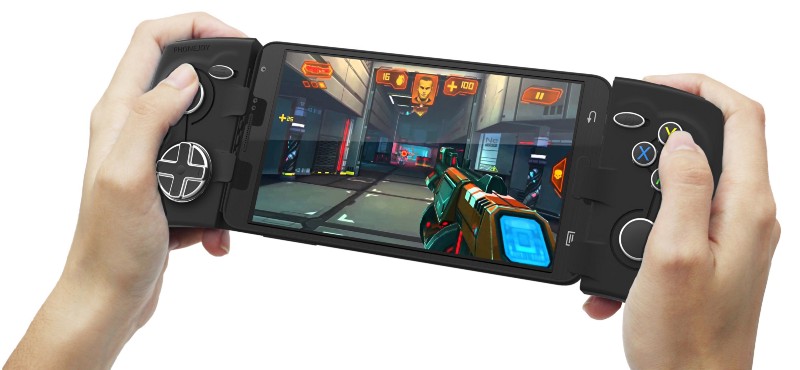

Phonejoy Controller
When people think game controller, they imagine something simple, something easy to manufacture. And boy, so did we when we first started Phonejoy as a two-man startup! However, like much of all modern connected hardware, it is truly a multi-disciplinary project. Our project requires electrical & mechanical engineering, industrial design, firmware, a database for our games catalog, as well as an Android and iPhone app. And that only covers the product development aspect of it. Like any other physical product we also need to handle the marketing, sales, and logistics side of it. All that had led us to expand to a team of now six. That aside, the need for prototyping and the time-consuming creation of expensive tooling for mass manufacturing plastic, steel and circuit boards result in a much higher upfront cost and lead time before being able to launch a product.

Dale who nearly completely engineered Phonejoy
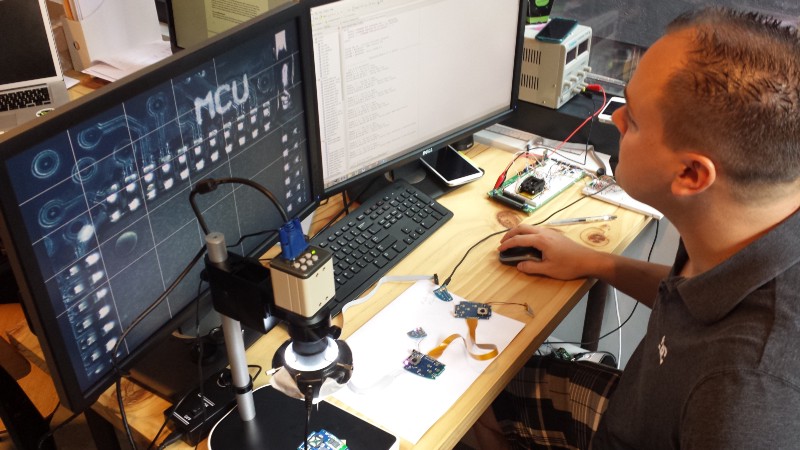
All these factors are making it more costly, risky and time consuming to start-up a hardware company than say a pure software company. However, as many have observed hardware has witnessed its renaissance in recent years. If Google’s most recent acquisition of NEST of for $3.2 billion and dozens of other hardware & robotics acquisitions during the past 12 months are of any indication, hardware is getting back into the game.
Part of the reason for the “Hardware Renaissance” is that like with software the development of hardware has become easier and cheaper than ever before. Today, 3D printers and Fab Labs are making the prototyping process less expensive and time consuming. Open source hardware such as the Raspberry Pi and Arduino have also made learning hardware easier and more accessible. At the same time, thanks to the emergence of freelancer networks such as eLance, Freelancer.com and oDesk some development tasks can be outsourced at reasonable cost.
Moreover, Shenzhen, too, has opened up to foreign hardware startups teaching them how to design manufacturable hardware (a hard lesson learned by us almost too late). Since our team is based just across the border of Shenzhen in Hong Kong, this has proved ever more vital to us. By being close to our manufacturer we have had the unique chance to easily source components for prototyping and work closely with our OEM setting up the production line and to minimize hiccups that would have even delayed things even further for us.
Most importantly, however, crowdfunding sources such as Indiegogo and Kickstarter, have made it easier for startups to demonstrate market fit, achieve traction and obtain sizable amount of funding before even launching one’s product.
Besides the changes in hardware development and funding processes, hardware as an industry is transforming into an industry that has become much more intertwined with software. Most hardware used to be either dumb and not require any software at all to function or alternatively its software had been very limited. Today in the era of smartphones and inexpensive ARM chips, most recent hardware projects have become incredibly clever in the things they can do. Watches, light bulbs, scales, smoke detectors and other previously dumb devices talking to your phone are now no longer a thing of the future. The movement of the Internet of Things (IoT) is however not driven by traditional consumer electronics manufacturers such as Sony, Philips, and Samsung, but by new companies such as FitBit, SmartThings, Pebble, NEST, LIFX, and others. Many of them Kickstarter funded and with lots of software inherent to their company DNA.

Final packing of Phonejoy devices at the factory
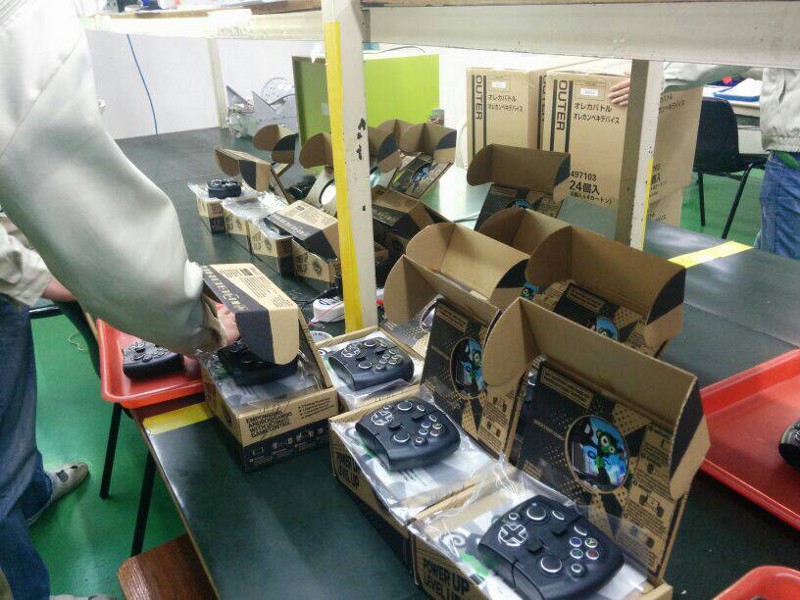
For us a mixture of these factors have allowed us to make it this far in the development of Phonejoy and deliver a product that our whole team can be very proud of. Both Hong Kong and Shenzhen are a great location to get started in this field. The potential is there for both, Hong Kong and Shenzhen to become a hub for hardware startups. With that said, making hardware is still damn hard. Without developing an eco-system in which makers can learn from each other, many mistakes will be needlessly repeated. To me learning is the key ingredient to an entrepreneur’s success.
This is why the founders of Makible, Ambi Labs and Phonejoy want to create a community in Hong Kong with StartwareHK, where knowledge can be shared in an open discussion environment. StartupsHK has done a great job in doing this for most tech startups here in Hong Kong and I hope that StartwareHK can help equally all those who are interested in building physical products.
If this sounds interesting to you, then come and join us this Wednesday (March 5th) at WYND for a refreshing conversation with fellow makers.
Click Here for a List of HW Startups based in Hong Kong
Useful links for those interested in hardware:
Who are you: Maker, Manager, or Entrepreneur
Accelerators/Incubators:
- http://www.haxlr8r.com (based in Shenzhen)
- http://www.hkstp.org/ (HK)
- http://cyberport.hk (HK)
Huaqiang Bei Map for Makers (great for prototyping):
Lessons from the operators:
- http://z.svbtle.com/why-kickstarter-projects-are-always-delayed
- http://marcbarros.com/
- http://www.slideshare.net/haxlr8r/software-is-from-silicon-valley-hardware-is-from-shenzhen
- http://www.slideshare.net/haxlr8r/great-makers-ship
- http://www.slideshare.net/haxlr8r/why-makers-fail-at-retail
- http://www.slideshare.net/haxlr8r/the-leanhardwarefinancing
- http://www.forbes.com/sites/roberthof/2014/02/04/how-fitbit-survived-as-a-hardware-startup/
- http://www.fastcodesign.com/1672681/life-after-kickstarter-5-costly-lessons-from-a-kickstarter-backed-designer#1
Opinions:
- http://www.trueventures.com/2013/07/27/the-hardware-revolution-is-upon-us-and-why-it-matters/
- https://medium.com/p/68a951e5c382
- http://pandodaily.com/2013/10/03/hardware-is-the-new-software-nope-saysmarc-andreessen-its-called-hardware-for-a-reason-it-is-hard/
- http://venturebeat.com/2012/09/15/hardware-is-dead/
- http://www.wired.com/opinion/2013/09/the-hardware-revolution-will-not-behyped-heres-what-itll-take-to-make-this-really-happen/
- http://www.theverge.com/2013/1/10/3861406/kickstarter-at-ces


